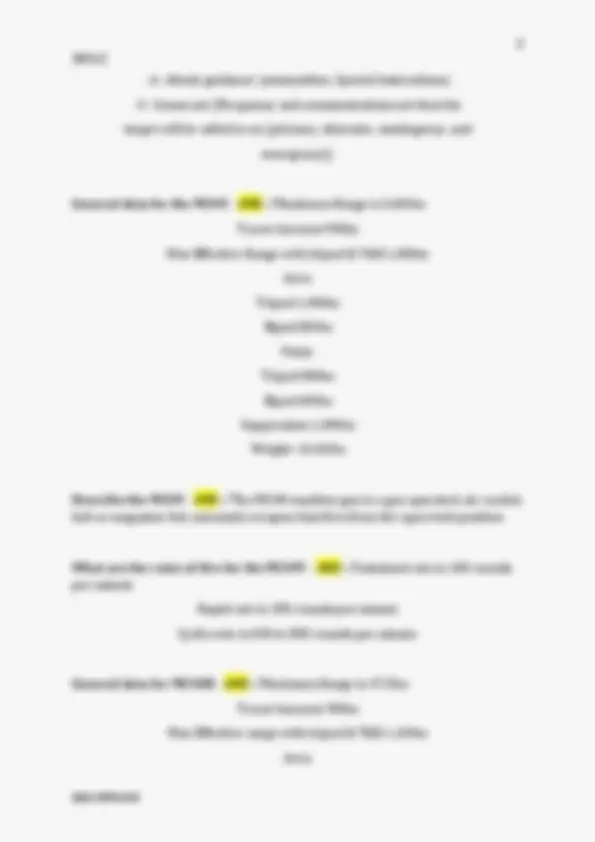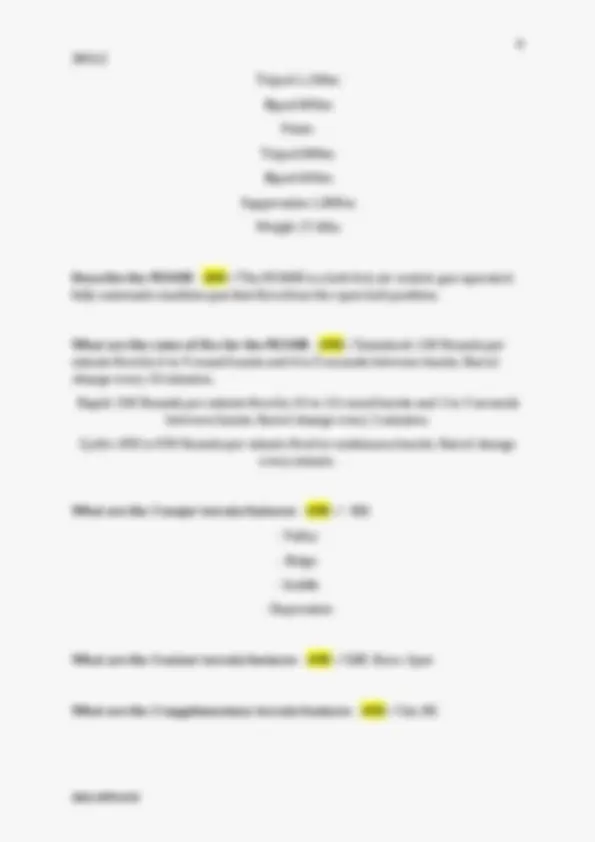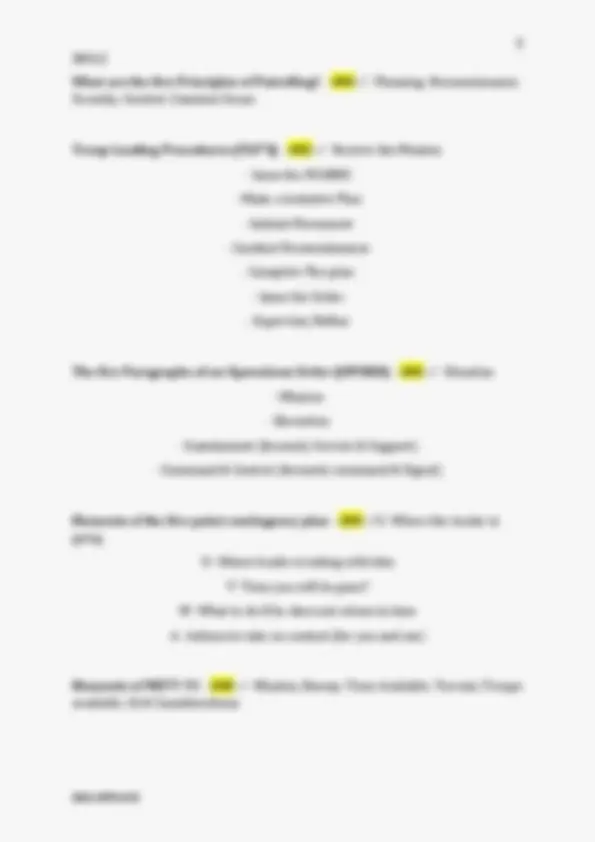





Study with the several resources on Docsity

Earn points by helping other students or get them with a premium plan


Prepare for your exams
Study with the several resources on Docsity

Earn points to download
Earn points by helping other students or get them with a premium plan
Community
Ask the community for help and clear up your study doubts
Discover the best universities in your country according to Docsity users
Free resources
Download our free guides on studying techniques, anxiety management strategies, and thesis advice from Docsity tutors
Characteristics of the Defense - ANS ✓PREPARATION SECURITY DISRUPTION MASS & CONCENTRATION FLEXIBILITY Manoeuvre Operation in depth Steps to engagement area development - ANS ✓- Step 1: Determine the enemy avenue of approach - Step 2: Determine the enemy scheme of manoeuvre - Step 3: Determine where to kill the enemy - Step 4: Plan and Integrate Obstacles - Step 5: Emplace Weapon Systems - Step 6: Plan and Integrate Indirect fire. - Step 7: Rehearse the Engagements Area Steps to Course of Action Development - ANS ✓-Analyze relative combat power -Generate options -Array initial forces -Develop a concept of operations
Typology: Exams
1 / 6

This page cannot be seen from the preview
Don't miss anything!




Characteristics of the Defense - ANS ✓PREPARATION SECURITY DISRUPTION MASS & CONCENTRATION FLEXIBILITY Manoeuvre Operation in depth Steps to engagement area development - ANS ✓- Step 1: Determine the enemy avenue of approach
Tripod 1,100m Bipod 800m Point: Tripod 800m Bipod 600m Suppression 1,800m Weight 27.6lbs Describe the M240B - ANS ✓The M240B is a belt-fed, air-cooled, gas-operated, fully automatic machine gun that fires from the open bolt position. What are the rates of fire for the M240B - ANS ✓Sustained: 100 Rounds per minute fired in 6 to 9 round bursts and 4 to 5 seconds between bursts. Barrel change every 10 minutes. Rapid: 200 Rounds per minute fired in 10 to 13 round bursts and 2 to 3 seconds between bursts. Barrel change every 2 minutes. Cyclic: 650 to 950 Rounds per minute fired in continuous bursts. Barrel change every minute. What are the 5 major terrain features - ANS ✓- Hill
What are the five Principles of Patrolling? - ANS ✓- Planning, Reconnaissance, Security, Control, Common Sense Troop Leading Procedures (TLP'S) - ANS ✓- Receive the Mission